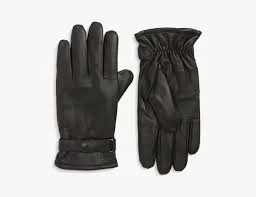PVC Acid Resistant Safety Clothing for Chemical Protection and Personal Safety
Chemical Resistance and Safety Clothing The Role of PVC in Protection Against Acids
In an era where industrial safety and personal protection are paramount, the importance of suitable safety clothing cannot be overstated. Workers in various sectors, especially those dealing with hazardous substances like acids, are at risk of exposure unless properly equipped. Among the different materials used for manufacturing safety clothing, PVC (Polyvinyl Chloride) has emerged as a popular choice due to its outstanding chemical resistance properties, particularly against acidic substances.
PVC is a synthetic plastic polymer that is known for its durability, versatility, and barrier properties. One of the most critical benefits of PVC is its excellent resistance to a wide range of chemicals, including strong acids. This resistance makes PVC an ideal choice for safety clothing, including aprons, gloves, and suits designed specifically for environments where workers may come into contact with caustic materials. Unlike other materials that may degrade or provide little to no protection upon exposure to acids, PVC retains its structural integrity and continues to serve as a reliable barrier against harmful chemicals.
The use of PVC-based safety clothing is particularly prevalent in industries such as chemical manufacturing, pharmaceuticals, waste management, and agriculture. In such environments, employees often encounter potential chemical spills, splashes, or leaks, which can pose serious health risks. Wearing PVC safety gear significantly minimizes these risks by providing a protective layer that can withstand acidic substances without compromising the safety and comfort of the wearer.
When selecting PVC safety clothing, it is crucial to consider several factors to ensure maximum protection. First, the thickness of the PVC fabric plays a vital role in its efficacy. Thicker materials typically offer enhanced protection against punctures and chemical permeation. Furthermore, garments should be designed with sealed seams to prevent chemicals from penetrating through stitches, as even small gaps can lead to exposure.
pvc acid chemical resistance safety clothing products

Comfort is another important aspect to consider. Safety clothing made from PVC should be flexible and breathable, enabling workers to perform their tasks without feeling restricted. Modern advancements in PVC technology have led to the development of softer and more pliable materials that provide both comfort and chemical resistance. This innovation not only enhances user experience but also encourages consistent use of protective gear among workers, promoting a culture of safety.
In addition to chemical resistance, PVC safety clothing should also meet specific safety standards and regulations. Organizations like OSHA (Occupational Safety and Health Administration) in the United States and similar bodies worldwide set guidelines for the manufacturing and use of personal protective equipment (PPE). These standards ensure that the clothing is tested rigorously in real-world conditions, guaranteeing its effectiveness in providing the promised level of protection.
To further enhance safety, regular training and awareness programs are essential for employees who work in hazardous environments. Workers should understand the limitations of their protective gear and be educated on proper usage, maintenance, and replacement of PVC safety clothing. By fostering a comprehensive safety culture, organizations can significantly reduce the likelihood of acid-related injuries and illnesses.
In conclusion, the role of PVC in chemical resistance safety clothing cannot be overstated, especially in industries where the risk of acid exposure is high. By harnessing the unique properties of PVC, manufacturers can provide effective, durable, and comfortable protective gear that safeguards workers from hazardous chemicals. As industries continue to prioritize safety, the demand for high-quality PVC safety clothing will likely remain robust, ensuring a safer working environment for all.
-
Wholesale Safety Helmets - Cheap OEM Supplier China Manufacturer
NewsMay.30,2025
-
Top Safety Helmet Manufacturers in Japan - Durable & Certified
NewsMay.30,2025
-
Affordable 3M Safety Helmets in Pakistan Bulk Pricing & Factory Deals
NewsMay.30,2025
-
Affordable HDPE & EN397 Hard Hats - Safety Certified, Bulk Deals
NewsMay.29,2025
-
FDA-Compliant Food Safety Clothing Suppliers Health Dept Approved
NewsMay.29,2025
-
adidas safety clothing
NewsMar.07,2025
